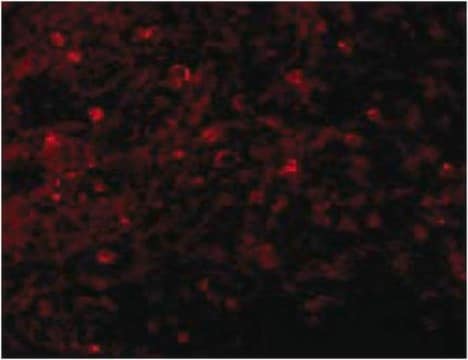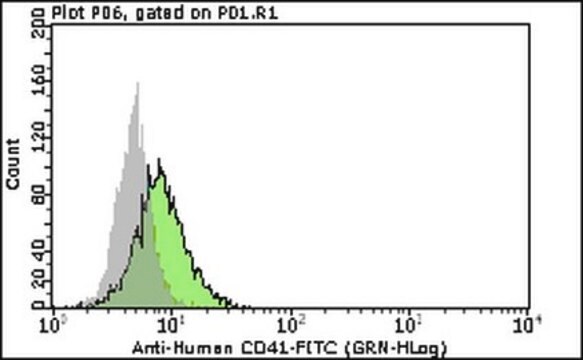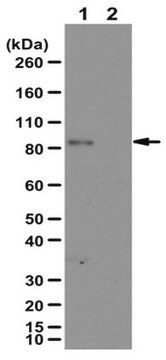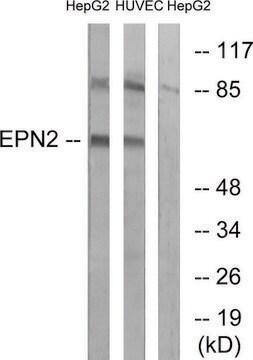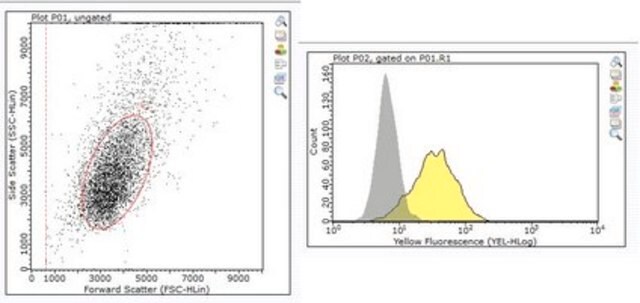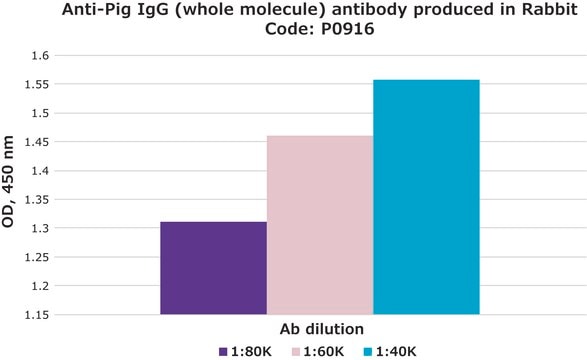AP184A
Donkey Anti-Sheep IgG Antibody, Alkaline Phosphatase conjugate, Species Adsorbed
0.6 mg/mL, Chemicon®
Sign Into View Organizational & Contract Pricing
All Photos(1)
About This Item
UNSPSC Code:
12352203
eCl@ss:
32160702
NACRES:
NA.46
Recommended Products
biological source
donkey
Quality Level
conjugate
alkaline phosphatase conjugate
antibody form
affinity purified immunoglobulin
antibody product type
secondary antibodies
clone
polyclonal
species reactivity
sheep
manufacturer/tradename
Chemicon®
concentration
0.6 mg/mL
technique(s)
ELISA: suitable
western blot: suitable
shipped in
wet ice
target post-translational modification
unmodified
General description
Alkaline Phosphatase-conjugated Affinity Purified Donkey anti Goat IgG (H+L)
Specificity
Based in immunoelectrophresis, this antibody reacts with the heavy and light chains on sheep IgG and with light chains common to most sheep immunoglobulins. No antibody was detected against non-immunoglobulin serum proteins. This antibody has been tested by Elisa and/ or solid phase absorbed to ensure minimal cross reactivity with chicken, guinea pig, Syrian Hamster, horse, human, mouse, rabbit, and rat serum proteins. Antibodies may cross react with immunoglobulins from other species.
Application
1:5,000 - 1:50,000 for Western Blot and Elisa
Optimal working dilutions must be determined by end user.
Optimal working dilutions must be determined by end user.
Donkey anti-Sheep IgG Antibody, Alkaline Phosphatase conjugate, Species Adsorbed detects level of Donkey Sheep IgG & has been published & validated for use in ELISA & WB.
Research Category
Secondary & Control Antibodies
Secondary & Control Antibodies
Research Sub Category
Secondary Antibodies Adsorbed for Dual Labeling
Secondary Antibodies Adsorbed for Dual Labeling
Linkage
Replaces: AP305A
Physical form
ImmunoAffinity Purified
RECONSTITUTION:
Reconstitute with sterile distilled water to match the volume indicated on the vial label. Centrifuge product if it is not completely clear after standing for 1-2 hours at room temperature.
Reconstitute with sterile distilled water to match the volume indicated on the vial label. Centrifuge product if it is not completely clear after standing for 1-2 hours at room temperature.
Storage and Stability
Maintain lyophilized product at 2-8°C for up to 12 months. After reconstitution the product is stable for several weeks at 2-8°C as an undiluted liquid. After dilution do not use for more than one day. For extended storage after reconstitution, add an equal volume of glycerol to make a final concentration of 50% glycerol followed by storage at -20°C in undiluted aliquots for up to 12 months. Please note the concentration of protein (and buffer salts) will decrease to one-half of the original after the addition of glycerol. Avoid repeated freeze/thaw cycles.
WARNING:
For research use only; not for use as a diagnostic.
WARNING:
For research use only; not for use as a diagnostic.
Legal Information
CHEMICON is a registered trademark of Merck KGaA, Darmstadt, Germany
Disclaimer
Unless otherwise stated in our catalog or other company documentation accompanying the product(s), our products are intended for research use only and are not to be used for any other purpose, which includes but is not limited to, unauthorized commercial uses, in vitro diagnostic uses, ex vivo or in vivo therapeutic uses or any type of consumption or application to humans or animals.
Not finding the right product?
Try our Product Selector Tool.
hcodes
pcodes
Hazard Classifications
Aquatic Chronic 3
Storage Class
11 - Combustible Solids
wgk_germany
WGK 3
Certificates of Analysis (COA)
Search for Certificates of Analysis (COA) by entering the products Lot/Batch Number. Lot and Batch Numbers can be found on a product’s label following the words ‘Lot’ or ‘Batch’.
Already Own This Product?
Find documentation for the products that you have recently purchased in the Document Library.
Naoko Sawada et al.
Journal of lipid research, 61(6), 816-829 (2020-04-16)
Oxidized LDL (oxLDL) is a known risk factor for atherogenesis. This study aimed to reveal structural features of oxLDL present in human circulation related to atherosclerosis. When LDL was fractionated on an anion-exchange column, in vivo-oxLDL, detected by the anti-oxidized
Our team of scientists has experience in all areas of research including Life Science, Material Science, Chemical Synthesis, Chromatography, Analytical and many others.
Contact Technical Service